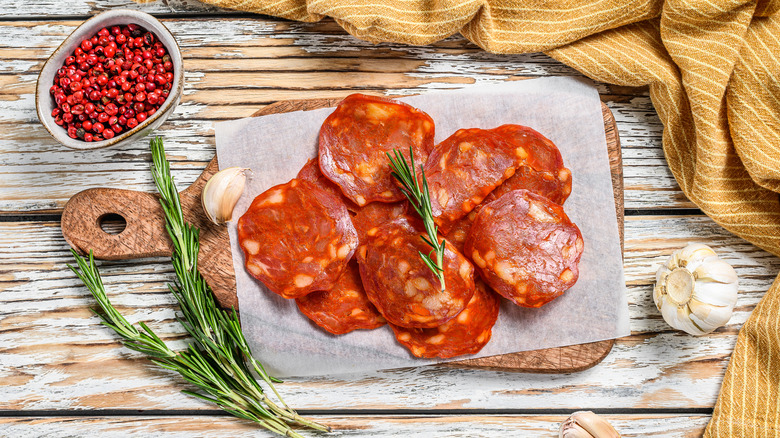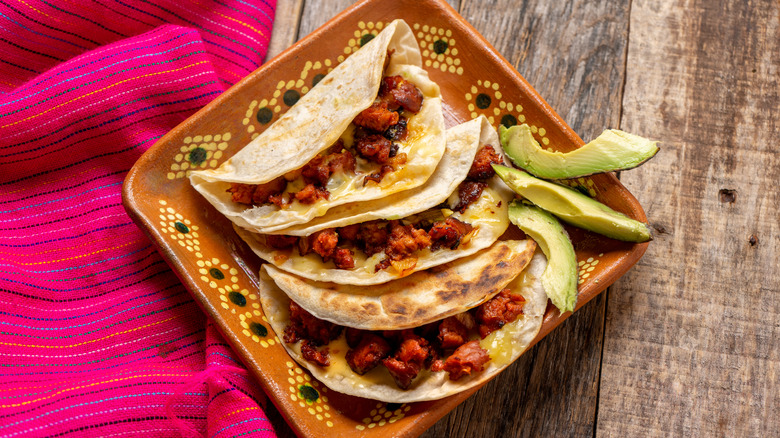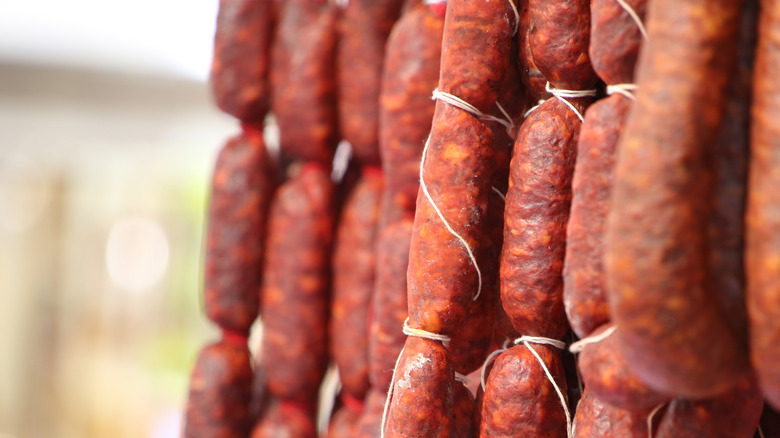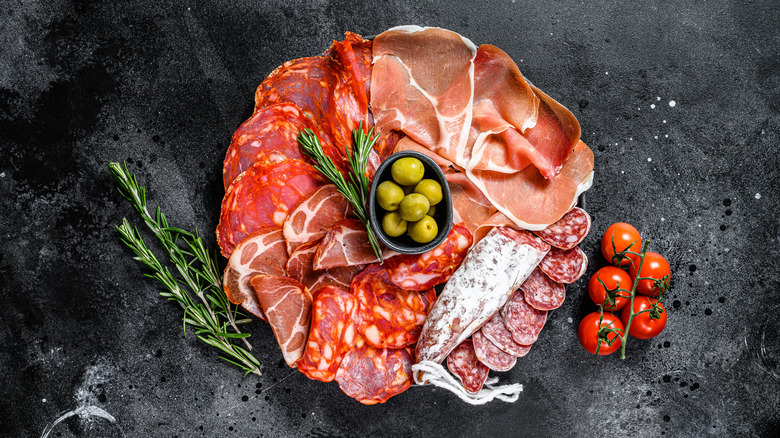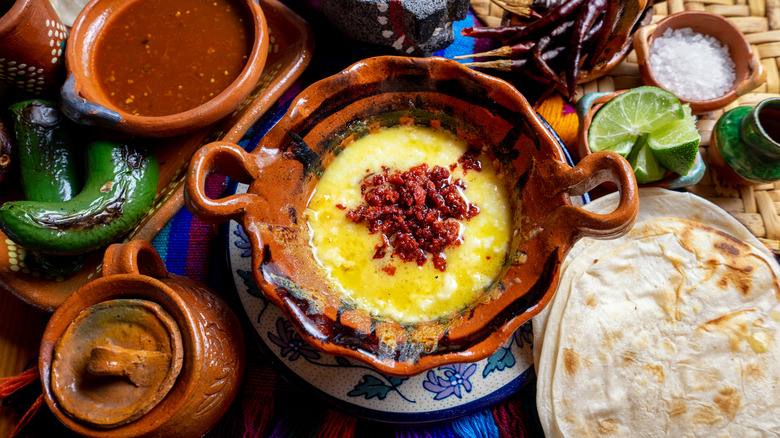Mexican Chorizo Vs. Spanish Chorizo: What's The Difference?
One is crumbled and pan-fried for dishes like breakfast tacos and lunchtime tortas. The other is sliced and eaten as is with cheeses and other cured meats during happy hour. Both are highly flavorful pork sausages called chorizo, but depending on which part of the world you're in, they look, feel, and taste very different. Here's how to distinguish between the most common types of chorizo — Mexican and Spanish — and decide which one works best for your sweet, smoky, spicy, or all-of-the-above recipe.
The key difference to remember between Mexican chorizo and Spanish chorizo is in the casing. Mexican chorizo is always removed from its casing and cooked before consumption, resulting in fine, fatty, brick-red crumbles that behave much like ground meat in recipes. Spanish chorizo, on the other hand, is usually ready to eat when purchased, casing and all, because it is dried during a days- or weeks-long curing process.
How Mexican chorizo is made and sold
Mexican chorizo is made with fresh ground sausage (usually pork, though beef and soy varieties are also available) that is moistened with additional pork fat and seasoned with vinegar, chilies, and spices. It gets its reddish hue from spicy red pepper and bold, warm flavor from additions like guajillo chile, oregano, cloves, cinnamon, and garlic.
After seasoning, Mexican chorizo is formed into short links, stuffed into casings, and left to air dry for one day to a week. It is often sold in packages of five links and stored with the other sausages and refrigerated meats at the supermarket. See what variations in ingredients you can discover from store to store and at Latin or farmers markets. "You will sometimes find special names like Longaniza, which describes a particular style of Mexican chorizo," chef Aarón Sánchez told Chowhound. "They're very regional."
How Spanish chorizo is made and sold
You can think of Spanish chorizo as "a hard sausage that's been cured like a salami," Sánchez explained to Chowhound. It begins with pork sourced from the jowl, belly, loin, back fat, and other areas of the pig. The meat is then coarsely chopped, rather than ground. Ingredients vary, but there is almost always hot or sweet pimentón (Spanish smoked paprika) for the signature scarlet color. Also often included are garlic, herbs, and white wine.
Spanish chorizo can be formed into short or long links, depending on the style, and air dried for several days or weeks, which will create differences in firmness. Some varieties are even fermented or smoked before the curing process. You can find Spanish chorizo online, at specialty stores. It can be found sliced or as the whole sausage with the charcuterie supplies in supermarket deli sections.
Different types of Spanish chorizo
Spanish chorizo has so many different variations that it would be inaccurate to lump them all under one large umbrella. Though most American grocers carry cured Spanish chorizo, there's also a raw variety called soft chorizo that should be thoroughly cooked before consumption. This type can be found in a casing, known as chorizo fresco, or loose, which is called picadillo. Chorizo semicurado is fermented, boosting both its acidity and shelf life, but not dried, so it is also cooked before eaten.
Common cured Spanish chorizos include chorizo riojano with garlic and both spicy and sweet pimentón, chorizo castellano with oregano, and chorizo andaluz with the classic seasonings, plus black pepper and cloves. The best (and the dreamiest) way to familiarize yourself with the country's different chorizo types would be to head to a butcher in Spain and order a giant platter of cured meats.
How Mexican chorizo and Spanish chorizo are used differently in recipes
Food experts believe that chorizo in general originated in the Catalonia region of Spain, reports Epicurious, and then spread throughout the world to influence the cuisines of Mexico, Portugal, Puerto Rico, Panama, the Philippines, and other countries. Look to those corners of the world for inspiration about what to do with your Spanish chorizo. While its chewy, salami-like texture makes it ideal for slicing and eating as a tapas dish with olives and manchego cheese, it can also be diced, crisped in a pan, and added to soup or seafood dishes for extra flavor.
Mexican chorizo, on the other hand, can be treated more like ground meat, fried and included in dishes like tacos, tostadas, chilaquiles, and melted queso. Because its flavor is already so strong, Mexican chorizo often does not need additional seasoning and actually benefits from being combined with fresh and bright ingredients for balance. For Sánchez, that balance comes from grilled pineapple and cilantro in a chorizo taco.
